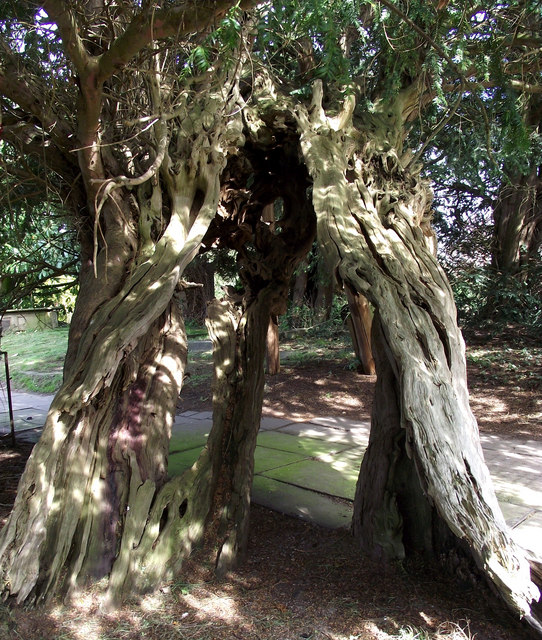Taxus baccata (English Yew)
 Taxus
baccata (see
classification), also known as the English yew, European yew, or
common yew, is one important tree that has, in many ways, served
a variety of mankind's needs. From the making of the first tools
tens of thousands of years ago to modern anti-cancer drug, the
English yew has proved to be valuable for many
uses. The English yew is
widely renowned for it's toxicity, as almost all of its parts are potentially lethal if
ingested.
Taxus
baccata (see
classification), also known as the English yew, European yew, or
common yew, is one important tree that has, in many ways, served
a variety of mankind's needs. From the making of the first tools
tens of thousands of years ago to modern anti-cancer drug, the
English yew has proved to be valuable for many
uses. The English yew is
widely renowned for it's toxicity, as almost all of its parts are potentially lethal if
ingested.As one might guess from it's names, the English yew (or European yew) is found in its natural habitat throughout Europe. However, this habitat is shrinking and efforts to save the English yew trees have proven to be mostly ineffective. It is imperative that people gain knowledge of the English yew and the true value of the resources this ancient tree provides. With this newfound familiarity, we can better understand the importance in preserving species such as this.
Click the links to the left or in paragraph for more in-depth information regarding:
Classification- complete taxonomic classification
Habitat- primary distribution of the English yew
Adaptations- how structures have adapted to the suit this yew's environment
Nutrient Acquisition- how this tree makes, stores, and uses it's "food"
Reproduction- replication and life cycle
Interactions- how Taxus baccata interacts with other organisms in it's environment
Uses- Resources the English yew has provided us throughout history
Toxicity- Information pertaining to the toxin "taxol' and it's effects.
This page has been created by Chad Kahles from the University of Wisconsin-La Crosse to provide information relating to Taxus baccata, or the English yew, to fellow students or anyone else who wishes to learn more about this fascinating organism. This page will be added to a vast list of web pages dedicated to more interesting organisms on MultipleOrganisms.net
Pictured above (top of page) is an English yew outside of a church. Taken from: commons.wikipedia.org
Last updated: 4/26/13